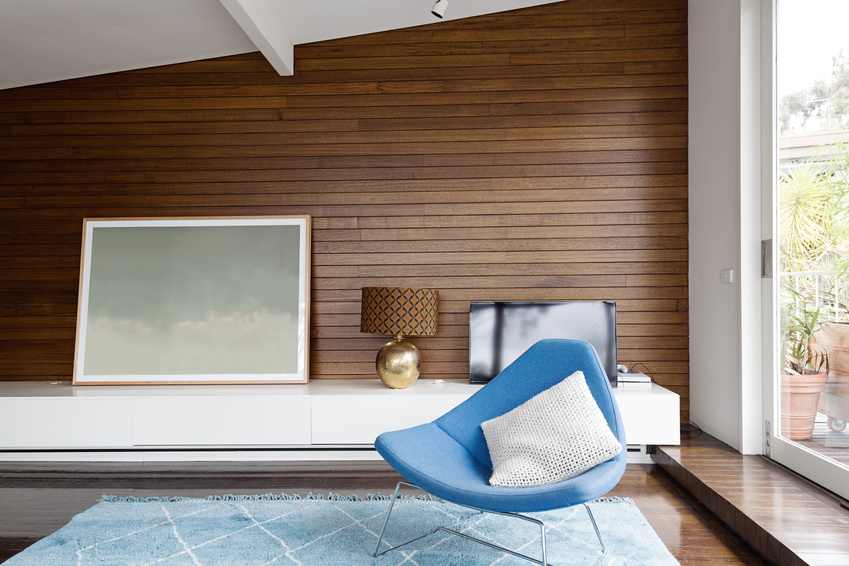A version of this post first ran in 2016.
A few years ago, I asked Marin/Sonoma Realtor Elizabeth Meyers for advice about what to think about when buying or selling mid-century modern homes. The advice she gave still holds true.
Special Considerations for Mid-Century Modern Homes
While much of the advice on buying and selling any home applies to mid-century moderns, there are some special considerations to take into account when you’re looking at buying or preparing to sell these special properties.
A Floor Plan That Works
“When people have lived in their home for a long time, they’ve likely made alterations, some of which may not work with the original design of a mid-century modern,” says Meyers.
Updates that add to the value of a home tend to emphasize the openness of the living space. Opening up a closed-in kitchen to the dining area or family room, or moving cabinets so sightlines are unobstructed may add to the appeal of an older home.
Eichlers with atriums are particularly prized by some enthusiasts, so making major changes may not be advisable, says Meyers, although she notes that judicious changes that add to the usability of the space can work, citing one client who added an unobtrusive, clear retractable roof, which retained the atrium’s original look and feel while enabling her to use the space in all kinds of weather.
Updated Kitchen and Bath
As with most homes, an updated kitchen and bathrooms will appeal to most buyers. Kitchens and baths in original mid-century homes tended to be small, and emphasized function rather than form. Renovations that work within that original framework can stay true to mid-century aesthetic while adding modern touches.
It doesn’t have to be expensive or fancy, says Meyers. “You probably don’t need a $7,000 professional stove in an Eichler. Contemporary fixtures, a new sink, new countertops and nice flooring can add a lot.”
Water-Conserving Landscaping
Indoor/outdoor living means that the landscaping around mid-century moderns is especially important. Clean, unfussy and, most importantly in California, water-conserving are the watchwords.
Many Californians are replacing water-hungry and high-maintenance grass lawns with drought-resistant landscaping; fortunately, plants that thrive in dry climates often complement mid-century modern design.
Permeable paving is a contemporary upgrade that looks good while being water- and eco-friendly.
Updated Electrical System
Mid-century modern homes were built with mid-century electrics, and homeowners can run into trouble trying to run contemporary appliances and electronics on outdated electrical panels. “You can’t have a 100-amp electrical panel and expect to have a jacuzzi bathtub,” says Meyers.
Electrical panels should be upgraded to 200 amps to power the modern home safely. “It comes up on inspection reports all the time,” says Meyers. “Sometimes when people have done work themselves, or added features, the city inspectors will tell them they have to update to meet code. Buyers don’t necessarily think about it until they see it in the report.”
Adequate Drainage
Many mid-century modern homes are built on concrete slabs, making it especially important to keep water from pooling around the structure’s base. Make sure the home you’re considering – or selling – has gutters and downspouts where necessary to direct runoff away from the slab.
If the home has a hillside behind it, you may need a French drain to keep runoff from accumulating around your home.
Updated Sewer Laterals
This falls under the “not-sexy-but-really-necessary” category. Older homes, like mid-century moderns, can have pipes with connections that may have slipped out of place. Tree roots can grow through pipes and cause leaks.
When this happens, sewage can back up into your yard or your home. Have the sewer laterals inspected and update them, if necessary, before this happens.
Inspect Radiant Heat
Radiant heat is a feature of many mid-century modern homes. Some, including Eichlers, used steel tubes in their heating systems, which are prone to degradation and leakage. (Copper tubing, used in some other mid-century moderns, are less likely to develop leaks.)
A specialist in radiant heating can inspect for leaks and, where possible, repair them. Keep in mind that the radiant heat tubing for many mid-century modern homes is buried within the concrete slab and may be unrepairable, meaning you will need to install an alternative heating system for your home.
Look for Permits
The older the home, the more likely successive owners have made changes that require permits. Meyers says, “If you’re buying, pay attention to the city inspection and make sure things that were done without permits aren’t being passed on to you, or make sure it’s reflected in the price negotiations.”
Whether you’re considering renovations to a home you’re planning to sell, or trying to determine what updates you’ll need to make to a home you’re buying, working with professionals who really know and love mid-century modern homes can make a big difference.


